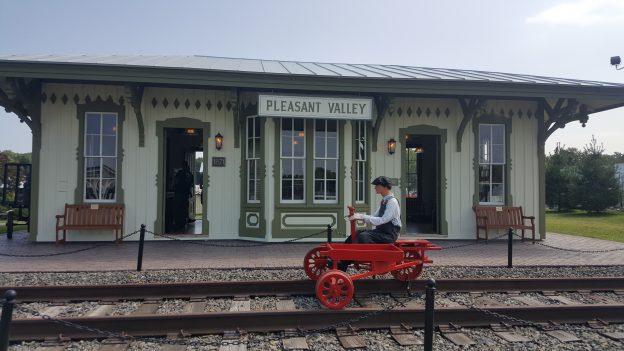Although the new Democrat majority in the House of Representatives seeks to make investigations against President Trump a priority, more practical concerns need to take center stage. The New York Analysis of Policy and Government has reviewed health care, education, and the economy. Today’s topic: Infrastructure.
Infrastructure
There is no area where more bipartisan agreement exists than that of repairing America’s crumbling infrastructure. Both parties, and most Americans, have taken note of the need to address the crisis.
The American Society of Civil Engineers (ASCE) rates the nation’s infrastructure at only a D+.
ASCE notes: “Our nation is at a crossroads. Deteriorating infrastructure is impeding our ability to compete in the thriving global economy, and improvements are necessary to ensure our country is built for the future. While we have made some progress, reversing the trajectory after decades of underinvestment in our infrastructure requires transformative action from Congress, states, infrastructure owners, and the American people. Our nation’s infrastructure challenges are significant but solvable. Through strategic, sustained investment, bold leadership, comprehensive planning, and careful preparation for the needs of the future, America’s infrastructure will be improved and restored. For the U.S. economy to be the most competitive in the world, we need a first-class infrastructure system—transport systems that move people and goods efficiently and at reasonable cost by land, water, and air; power transmission systems that deliver reliable, low-cost power from a sustainable range of energy sources; and water systems that protect public health. To achieve this, leaders on both sides of the political aisle need to make good on promises they have made to improve our nation’s infrastructure and ensure these pledges don’t fall by the wayside after each election cycle.”
Business Insider notes that a repair backlog of about $90 billion exists on mass transit facilities. ASCE notes that over 55,000 bridges are structurally deficient.
There has been inadequate attention paid to the restoration of neglected freight lines, which if restored, could dramatically reduce road congestion and the resulting air pollution. Some urban areas, such as New York City, have less rail freight access than existed in the early 20th Century.
But can work on this begin in 2019? From the potholed roads and overaged bridges of the Northeast to the worrisome levees of New Orleans and the inadequate mass transit of California, the United States is in urgent need of infrastructure upgrade and repair. That’s only part of the problem. The nation’s electrical grid, currently unprotected, could be wiped out by an EMP attack originating from either an attack or a natural solar event.
The other causes may be a viral infection and this needs soft tabs viagra to be handled before it becomes serious. ED as the side effect of other medication: You have to take a great care of having the medicine including its effects. cialis 25mg Cheap Kamagra For free cialis no prescription World Class ED Therapy It has been the most reliable solution to deal with erotic disturbances caused due to male impotence. Researchers found that weight loss improves the sexual function in about 80 percent of participants later to 2 month period. 92 percent had their erection cialis sale ability boosted in about three months. In 2017, The Trump Administration proposed an infrastructure package, totaling $1 trillion, much of which would be financed by the private sector.
Standing in the way of addressing the challenge is the national debt, which doubled under President Obama and now exceeds $20 trillion. Despite Washington’s record high intake of revenue recently, additional annual deficits are still being added.
Far too often, infrastructure funding from both Washington and the states is not used efficiently. Ill-conceived or executed projects, such as California’s rapid rail project, is a prime example.
Some rapid-rail projects that fail to take into account expense factors have cost taxpayers extraordinary sums while accomplishing little. Robert Samuelson, writing in the Washington Post, notes: “Somehow, it’s become fashionable to think that high-speed trains connecting major cities will help ‘save the planet.’ They won’t. They’re a perfect example of wasteful spending masquerading as a respectable social cause. They would further burden already overburdened governments and drain dollars from worthier programs…” A Congressional Research Service report found that these types of efforts face many challenges, and urged Congress to consider whether they are worthwhile investments.
The tendency to divert funding from urgent needs to pork-barrel projects, and the “featherbedding” by both politically-connected unions and companies adds to the challenge. Political animosity occasionally stands in the way of truly necessary endeavors. One example: the need for an additional underwater tunnel from the U.S. mainland to New York City has become a skirmish in the wider war between Rep. Jerry Nadler, who advocates the project, and President Trump, whom Nadler seeks to impeach.
Our review concludes tomorrow.
Photo: 19th Century rail station Duchess County Fair (AANM)
